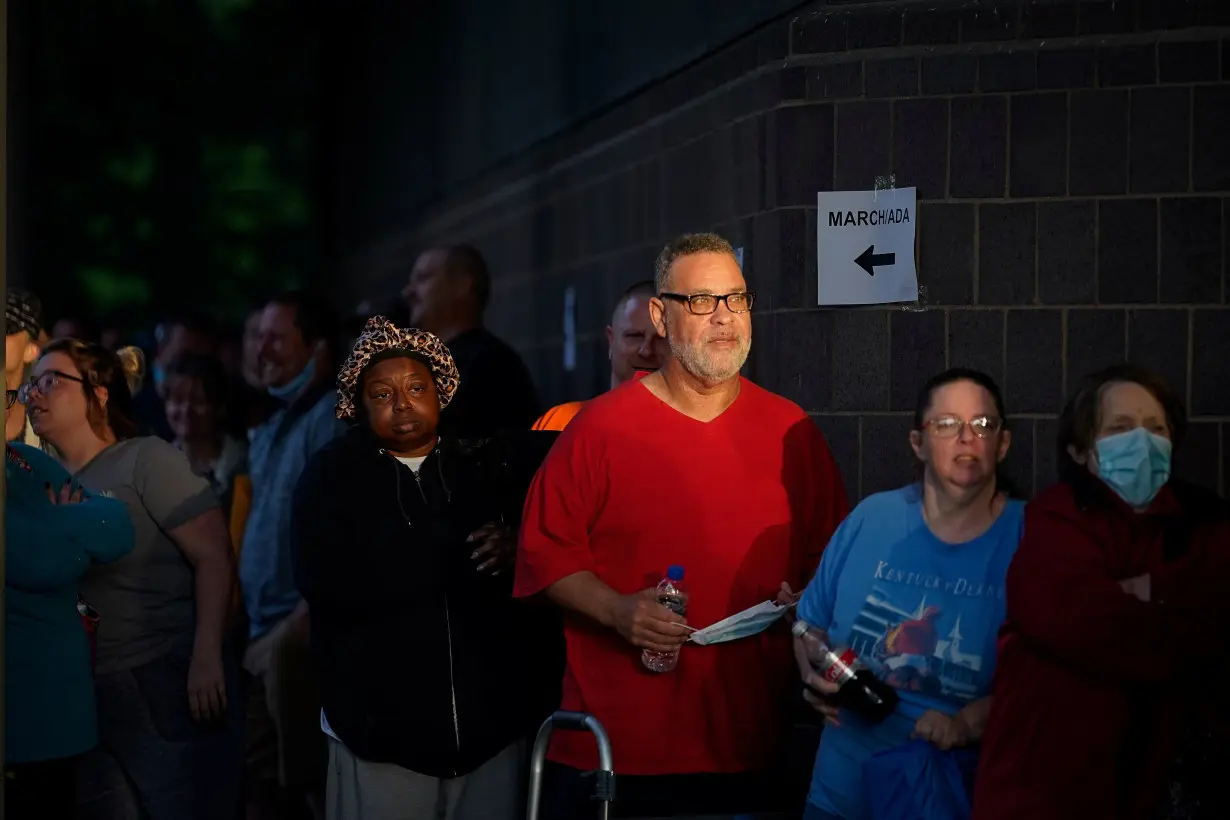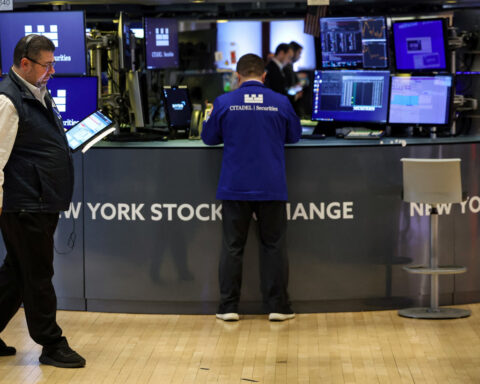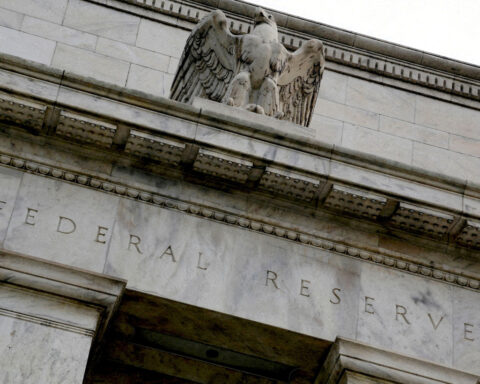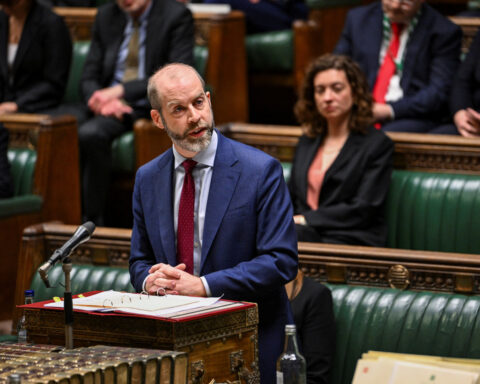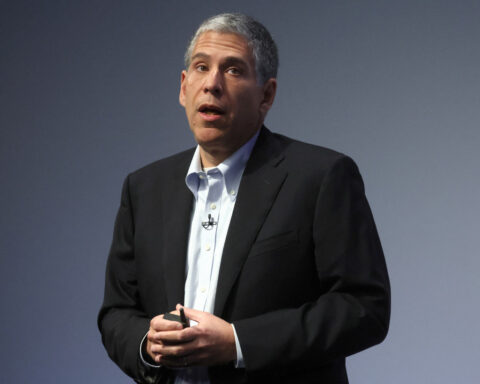By Lucia Mutikani
WASHINGTON (Reuters) -The number of Americans filing new applications for unemployment benefits rose slightly last week, suggesting no material change in the labor market and reinforcing views that hurricanes and strikes had resulted in job growth almost stalling in October.
Though the labor market is easing, wage pressures are not showing a significant cooling, casting a shadow over the inflation and interest rate outlook. Unit labor costs increased at a solid clip in the third quarter, other data from the Labor Department showed on Thursday.
Economists said the strong rise in labor costs, which was accompanied by a sharp upward revision to the second-quarter data, was not compatible with inflation returning and staying at the Federal Reserve's 2% target. The U.S. central bank on Thursday cut interest rates by 25 basis points as expected, lowering its policy rate to the 4.50%-4.75% range.
"Unit labor costs growth is the single biggest determinant of labor-intensive core services prices," said Paul Ashworth, chief North America economist at Capital Economics. "Unless unit labor costs growth slows again, it will be a lot harder for Fed officials to claim that inflation can be sustained at 2%."
Initial claims for state unemployment benefits increased 3,000 to a seasonally adjusted 221,000 for the week ended Nov. 2, the Labor Department said. Economists polled by Reuters had forecast 221,000 claims for the latest week.
Unadjusted claims rose 10,827 to 212,274 last week, boosted by a 4,278 jump in filings in California. Applications rose by 3,563 in Michigan and shot up 1,927 in Ohio, more than offsetting notable drops in Florida and Georgia.
Employment growth slowed sharply last month, with nonfarm payrolls increasing by only 12,000 jobs, the fewest since December 2020. That aligned with a surge in claims in early October as Hurricane Helene disrupted economic activity in the U.S. Southeast region. Applications stayed elevated through the middle of last month after Hurricane Milton lashed Florida.
A strike by factory workers at Boeing, which forced the planemaker to implement rolling furloughs, also weighed on payrolls in October. The disruptions from the hurricanes have almost faded and the striking workers have gone back to work after agreeing to a new contract this week, paving the way for an acceleration in job growth in November.
"New claims are signaling the weak October payroll print was likely an aberration driven by storms and strikes and that we should see a rebound in November," said Abiel Reinhart, an economist at JPMorgan.
INFLATION BACK IN FOCUS
The number of people receiving benefits after an initial week of aid, a proxy for hiring, rose 39,000 to a seasonally adjusted 1.892 million during the week ending Oct. 26, the claims report showed.
"The settlement of the Boeing strike will bring down the number of continuing claims as soon as next week's report," said Carl Weinberg, chief economist at High Frequency Economics. "There is no call for radical monetary easing in today's figures, or in any labor market indicator for that matter."
The Fed embarked on its policy easing cycle with an unusually large half-percentage-point rate cut in September, the first reduction in borrowing costs since 2020. It hiked rates by 525 basis points in 2022 and 2023 to curb high inflation.
Stocks on Wall Street traded higher. The dollar slipped against a basket of currencies.
The yield on the benchmark 10-year U.S. Treasury note retreated from four-month highs as investors continued to digest Donald Trump's victory in the U.S. presidential election that has fueled fears his economic policies could stoke inflation.
Concerns about inflation were amplified by a separate report from the Labor Department's Bureau of Labor Statistics showing unit labor costs - the price of labor per single unit of output - increased at a solid 1.9% annualized rate in the July-September quarter after an upwardly revised 2.4% pace of expansion in the second quarter.
Economists had forecast labor costs rising at a 1.0% rate after a previously reported 0.4% pace of increase in the second quarter.
The revisions reflected annual upgrades to national accounts data published in September, which showed stronger income and overall economic growth than previously estimated.
Labor costs increased at a 3.4% rate from a year ago, up from a 3.2% pace in the second quarter.
They were, however, revised down by 0.6 percentage point to 2.2% in 2023. They increased 5.1% in 2022, down from the previously reported 5.7%. But they have picked up this year.
"Chairman (Jerome) Powell and others at the Fed have essentially declared that the labor market is no longer an upward influence on inflation," said Stephen Stanley, chief U.S. economist at Santander U.S. Capital Markets. "These data suggest that this sanguine view may be a bit premature."
Nonfarm productivity, which measures hourly output per worker, increased at a 2.2% rate last quarter after a downwardly revised 2.1% growth pace in the April-June quarter. Productivity was previously estimated to have increased at a 2.5% rate in the second quarter. It increased at a 2.0% pace from a year ago.
Productivity grew at a 1.9% rate from the first quarter of 2018 through the second quarter of 2024, revised up from the previously estimated 1.7% pace, in tandem with the upgrades to GDP data. It was revised higher in each of the past three years, and is helping to underpin the economy.
"Businesses are continuing to invest in technologies that will make their existing workers more productive," said Gus Faucher, chief economist at PNC Financial. "Over the longer run artificial intelligence holds tremendous potential for boosting productivity growth."
(Reporting by Lucia Mutikani; Editing by Paul Simao, Chizu Nomiyama and Andrea Ricci)

 Trump has begun another trade war. Here's a timeline of how we got here
Trump has begun another trade war. Here's a timeline of how we got here
 Canada's leader laments lost friendship with US in town that sheltered stranded Americans after 9/11
Canada's leader laments lost friendship with US in town that sheltered stranded Americans after 9/11
 Chinese EV giant BYD's fourth-quarter profit leaps 73%
Chinese EV giant BYD's fourth-quarter profit leaps 73%
 You're an American in another land? Prepare to talk about the why and how of Trump 2.0
You're an American in another land? Prepare to talk about the why and how of Trump 2.0
 Chalk talk: Star power, top teams and No. 5 seeds headline the women's March Madness Sweet 16
Chalk talk: Star power, top teams and No. 5 seeds headline the women's March Madness Sweet 16
 Purdue returns to Sweet 16 with 76-62 win over McNeese in March Madness
Purdue returns to Sweet 16 with 76-62 win over McNeese in March Madness
